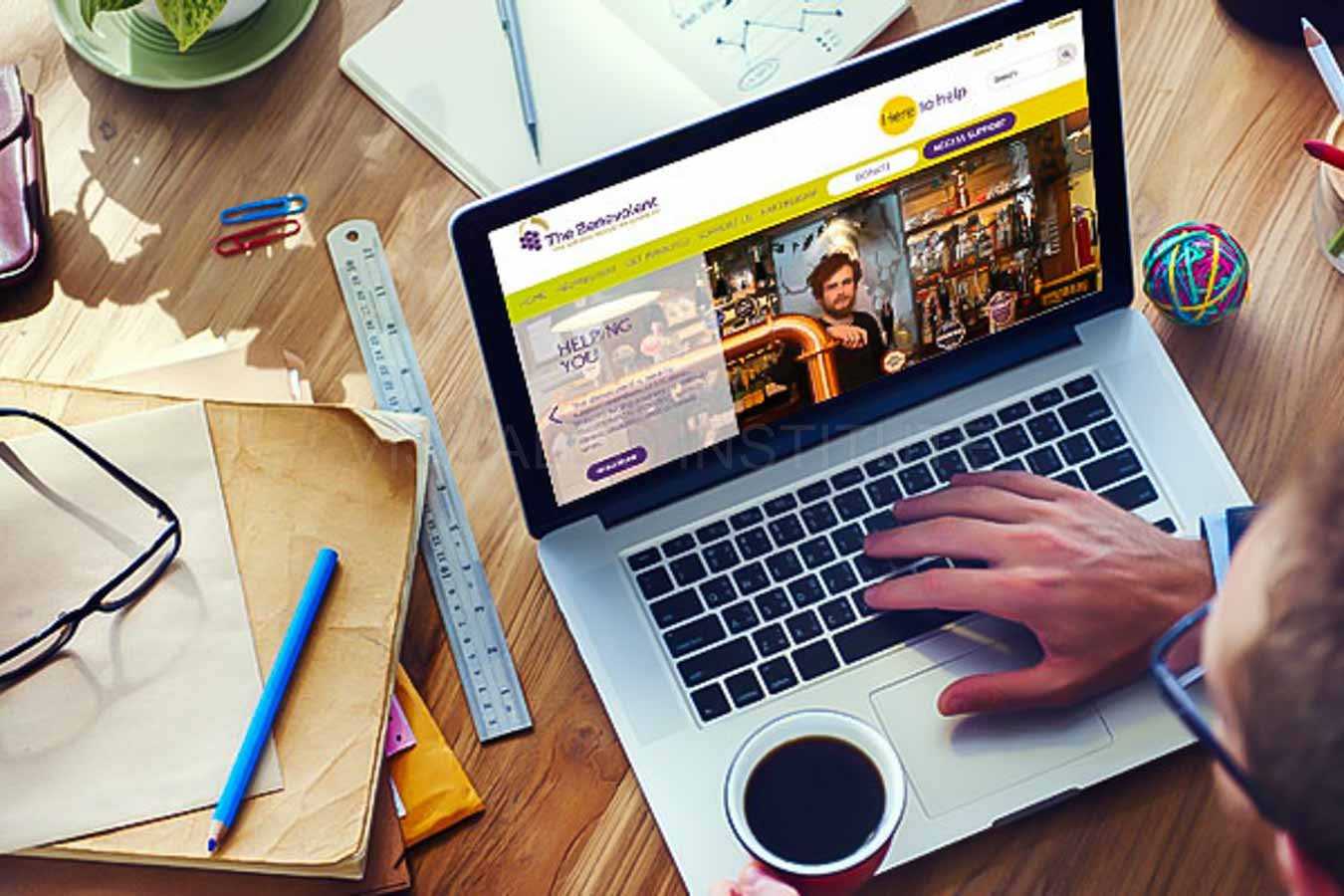How to Effectively Combine Aesthetic Appeals and Capability in Website Design
When developing a site, you need to strike a balance between aesthetics and performance. It's not almost looking great; your design ought to additionally serve an objective and overview individuals successfully. By focusing on simpleness and instinctive navigation, you can produce an appealing experience. What elements truly improve use while preserving aesthetic charm? Let's check out the essential concepts that can lead to a harmonious mix of elegance and feature.
Recognizing the Significance of Visual Appeals and Functionality
When you make an internet site, understanding the balance in between aesthetic appeals and performance is crucial for producing an efficient customer experience. A visually appealing site grabs interest, however it's the performance that maintains users involved. If your site looks great but is hard to navigate, visitors will promptly lose passion and leave.Consider your target market and what draws them in. You want to produce a design that mirrors your brand name while ensuring convenience of use. Streamlined layouts, intuitive navigation, and clear phone calls to activity can boost both aesthetics and functionality.

Principles of Effective Internet Style
To create an efficient website design, you need to abide by numerous vital concepts that boost both individual experience and aesthetic charm. Focus on simpleness; a tidy format assists customers browse conveniently. Use a constant color design and typography to preserve coherence throughout your site. This fosters knowledge and trust.Next, assure your style is responsive. Individuals accessibility internet sites on various devices, so your style should adapt seamlessly. Pay attention to visual pecking order; highlight essential aspects with dimension, color, or placement to direct customers' focus.Finally, incorporate sufficient white area. It protects against mess and makes material a lot more absorbable. Remember, effective website design equilibriums aesthetics and functionality, so every style option ought to offer a purpose. By following these principles, you'll produce a website that's not just aesthetically attractive but also straightforward, eventually keeping site visitors involved and motivating them to return.
Prioritizing User Experience
When focusing on individual experience, you'll wish to begin by comprehending what your users genuinely require. Simplifying navigating layout can make a massive distinction in just how conveniently they discover what they're trying to find. Likewise, boosting aesthetic hierarchy helps guide their focus to one of the most vital aspects on your website.
Comprehending Individual Demands
Comprehending individual demands is essential for developing an appealing internet experience that keeps visitors returning. To attain this, you should recognize the objectives and choices of your target market. Begin by conducting customer research, like studies or interviews, to collect insights on what users value most. When communicating with similar internet sites, pay focus to their discomfort factors and obstacles. This info permits you to tailor your design, making sure functionality lines up with individual assumptions. Furthermore, take into consideration producing user characters that represent various segments of your target market, assisting you visualize their demands throughout the layout process. When you prioritize understanding individual needs, you develop an internet site that not only looks fantastic but also provides a seamless, pleasurable experience that promotes commitment.
Simplifying Navigation Layout

Enhancing Aesthetic Power Structure
A solid visual power structure is important in leading users through your web site and ensuring they engage with essential content. To accomplish this, use spacing, shade, and dimension purposefully. Make vital aspects like headings bigger and bolder than body message, attracting attention instantly. Utilize contrasting colors to highlight phone calls to action, motivating clicks. Furthermore, employ enough white room to separate sections, making content absorbable and inviting.Consider the flow of info; prepare elements realistically, leading individuals' eyes from one point to the following. Use aesthetic hints, like lines or arrowheads, to direct interest. By focusing on aesthetic hierarchy, you enhance customer experience and increase the possibility of conversions, guaranteeing your website is both visually pleasing and functionally reliable.
Color Theory and Its Influence On Functionality
While choosing the ideal shades for your site might look like a minor information, it substantially influences usability and user experience. Color influences just how individuals regard information and can prevent or improve navigation. As an example, contrasting shades can help crucial components attract attention, making it less complicated for visitors to locate what they need.Additionally, think about the psychology of colors: blue typically motivates depend on, while red creates urgency. Recognizing your target audience can assist your shade choices, guaranteeing they resonate well.Moreover, consistent shade systems aid construct brand identification, making your website extra memorable. Nevertheless, beware-- way too many colors can bewilder individuals. Adhere to a restricted scheme that matches your web content and keeps clarity.Incorporating availability is also crucial; confirm your shade combinations get along for those with aesthetic disabilities. By thoughtfully applying color theory, you'll enhance functionality and produce an extra appealing individual experience.
Typography: Balancing Design and Readability
Shade options established the stage for your web site, but typography plays an equally essential function in enhancing user experience. You want your message to interact clearly while likewise reflecting your brand's individuality. Beginning by selecting typefaces that are not only appealing however additionally clear. Sans-serif font styles usually function well for digital screens, as they're easier to check out at various sizes.Maintain a pecking order by using various font style sizes and weights; this overviews customers via your web content effortlessly. Consider line spacing and letter spacing; as well limited can discourage viewers, while also loose can interrupt the circulation. Limitation your font style choices to two or 3 to keep the design cohesive.Finally, constantly check your typography throughout different devices and browsers. What looks great on one screen might not on another. Stabilizing design with readability warranties that your message resonates, maintaining your target market involved and educated.
Responsive Style: Making Aesthetic Appeals Work on All Devices
To ensure your internet site looks great on any gadget, you'll need to welcome responsive layout concepts. This method assurances your site adapts to numerous screen sizes, offering an optimal individual experience. Begin by making use of fluid grids and flexible pictures that scale flawlessly. Rather of fixed dimensions, decide for percentages and loved one devices, enabling your design to adjust dynamically.Next, implement media inquiries in your CSS. These allow you use different styles based on device attributes, like display width. This means, you can maintain aesthetic allure while ensuring functionality.Don' t forget touch targets; make sure switches and links are very easy to tap on smaller sized displays. Focus on vital material, so users can quickly browse your website regardless of their tool. By concentrating on these elements, you'll create an engaging, aesthetically appealing experience that fulfills the demands of all users, whether they're on a desktop computer, smartphone, or tablet computer .
Conducting Usability Screening for Constant Enhancement
To improve your web style, you require to set clear usability objectives that align with user needs. By conducting user examinations, you can collect useful responses on exactly how actual individuals communicate with your website. Examining these results will assist you make informed improvements and create a more efficient individual experience.
Defining Use Goals
While aesthetics can attract customers in, specifying use objectives is essential for ensuring their experience continues to be rewarding and smooth. Beginning by identifying what you want users to achieve on your website (website design london Ontario). Consider their actions, jobs, and needs. Are they trying to find details, purchasing, or authorizing up for a newsletter? Develop clear standards to determine success, like task conclusion prices or time on job. Prioritize instinctive navigating, obtainable material, and receptive layout to boost functionality. Frequently take another look at these objectives as customer assumptions progress. By defining functionality objectives, you develop a structure for examining and enhancing your site's performance. This focus on functionality not just enhances individual fulfillment but additionally enhances the general performance of your layout
Conducting User Tests
Carrying out customer examinations is essential for refining your web site and guaranteeing it fulfills your target market's requirements. Start by determining your target customers and creating an examination strategy that outlines your goals. Use a mix of measurable and qualitative techniques, such as surveys, interviews, and task-based observations, to gather comprehensive comments. Welcome individuals to browse your website while you observe their interactions and note any troubles they come across. Urge open discussion to catch their ideas and feelings regarding the layout and functionality. Keep sessions brief and concentrated, ensuring you cover crucial locations without frustrating individuals. Make sure to document all searchings for, as this information will certainly be very useful for making educated layout decisions that boost both visual appeals and use.
Examining Examination Outcomes
Exactly how can you effectively assess the outcomes of your usability tests to drive continual improvement? Begin by categorizing comments right into common styles. Seek patterns in user habits that highlight discomfort points or locations for improvement. Use measurable information, like job completion prices and time on task, to determine usability fairly. Don't forget to take right into account qualitative understandings from individual remarks; they commonly disclose underlying problems that numbers can not reveal. Focus on one of the most impactful searchings for and create actionable products for your design group. Remember, it's regarding iterating-- implement adjustments, after that test once more. This cycle of testing, assessing, and refining helps you more info equilibrium aesthetics and capability, ensuring your web site satisfies user requirements successfully while preserving visual allure.
Often Asked Inquiries
Just how Do I Select the Right Color Scheme for My Internet site?
To select the best shade palette for your internet site, consider your brand's personality, target market, and psychological influence (website design london Ontario). Usage shade psychology, create harmony, and guarantee readability. Examination mixes to see what reverberates finest with visitors
What Devices Can Assist With Website Design Visual Appeals and Functionality?
You can use devices like Adobe XD, Figma, and Sketch to boost your website design's visual appeals and functionality. These platforms offer instinctive user interfaces, cooperation features, and pre-made design templates to streamline your creative process and boost your layouts.
How Can I Incorporate Animations Without Endangering Performance?
To integrate animations without compromising performance, prioritize subtle effects that improve customer experience. Usage CSS computer animations for smoother interactions, guarantee fast lots times, and test on different gadgets to preserve performance while adding aesthetic charm.
What Are Usual Blunders to Prevent in Internet Layout Looks?
When making, avoid chaotic formats, bad color choices, and inconsistent typefaces. Do not ignore mobile responsiveness, as it can push away customers. Confirm your style straightens with your brand name, developing a seamless experience that involves visitors effectively.
Exactly how Commonly Should I Update My Website's Style for Optimum Visual Appeals?
You should upgrade your web site's layout every 1-2 years to stay up to date with patterns and maintain suitable appearances. On a regular basis restoring visuals assists involve assurances and site visitors your site stays easy to use and enticing. When you design an internet site, understanding the equilibrium in between aesthetic appeals and performance is vital for creating a reliable customer experience. To create a reliable internet style, you need to stick to numerous vital concepts that boost both user experience and aesthetic charm. Customers access websites on various devices, so your layout must adapt seamlessly. When prioritizing user experience, you'll want to start by recognizing what your customers genuinely require. Begin by performing individual study, like interviews or studies, to gather understandings on what customers worth most.